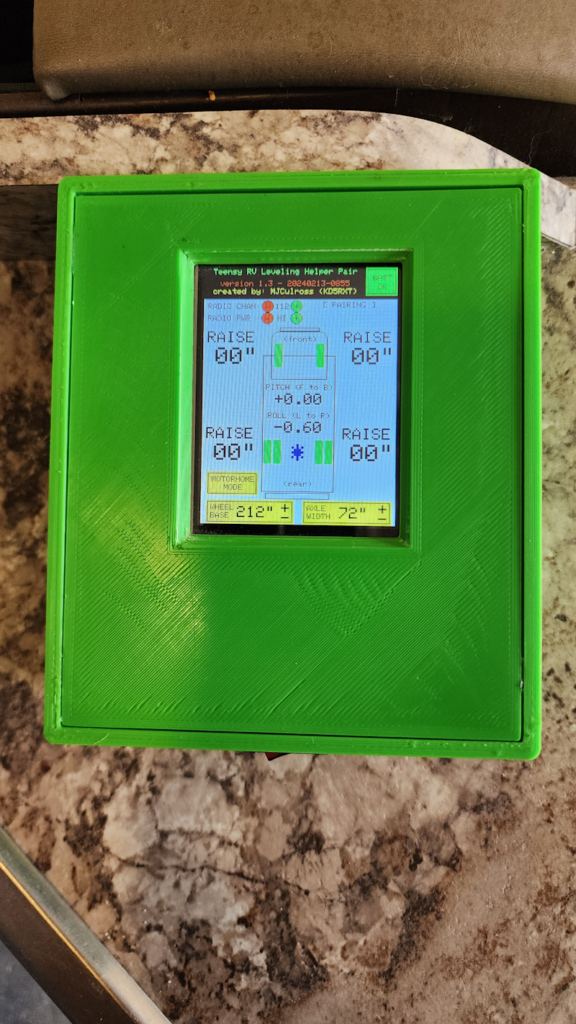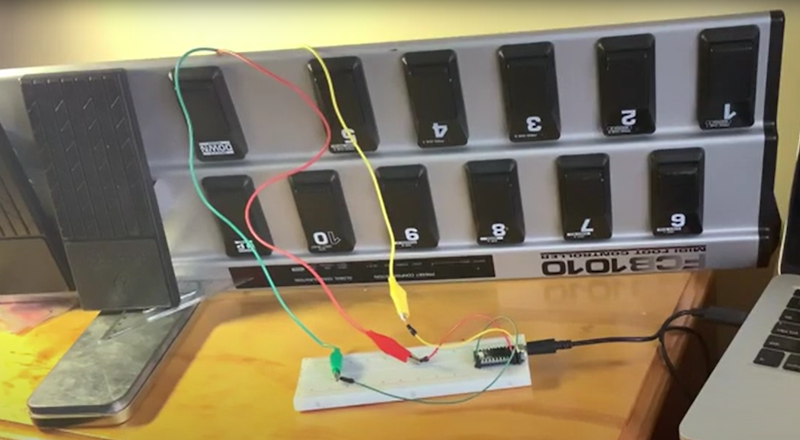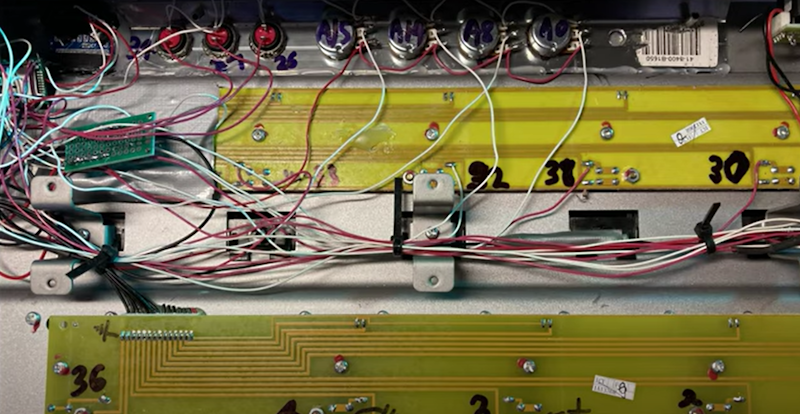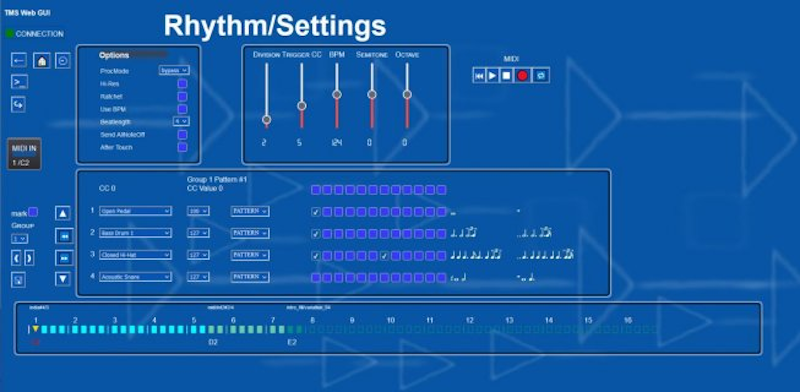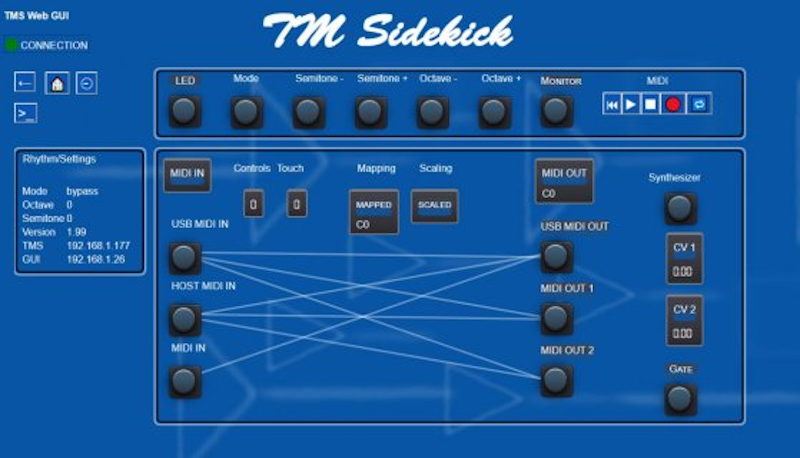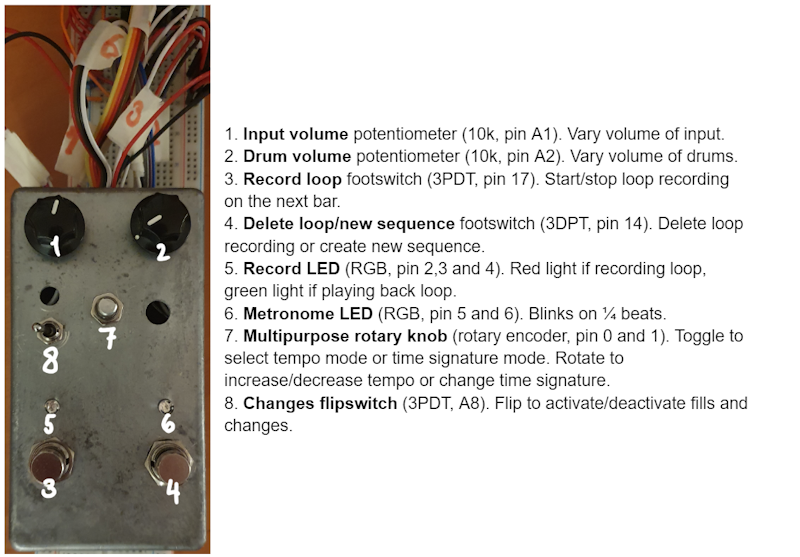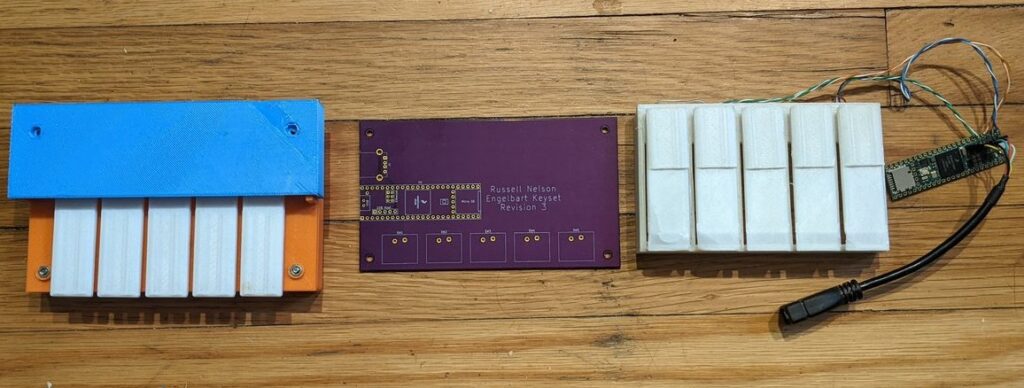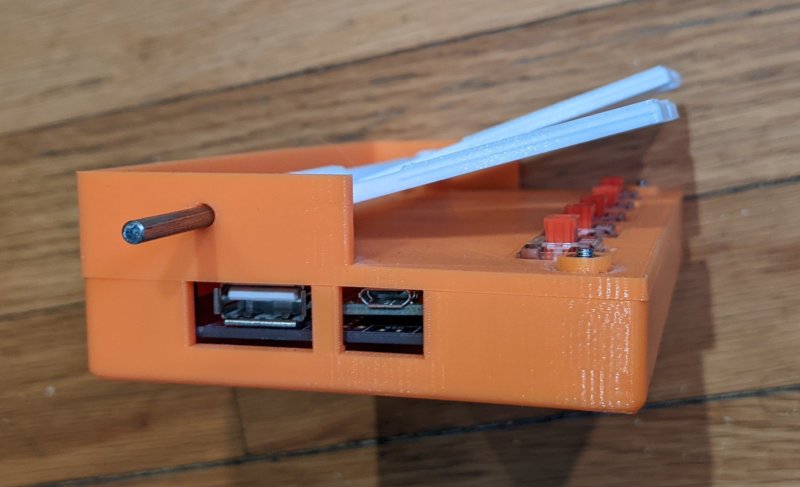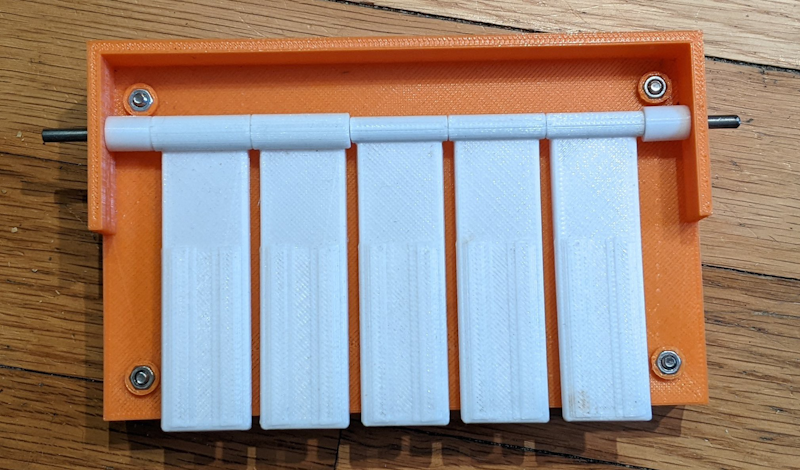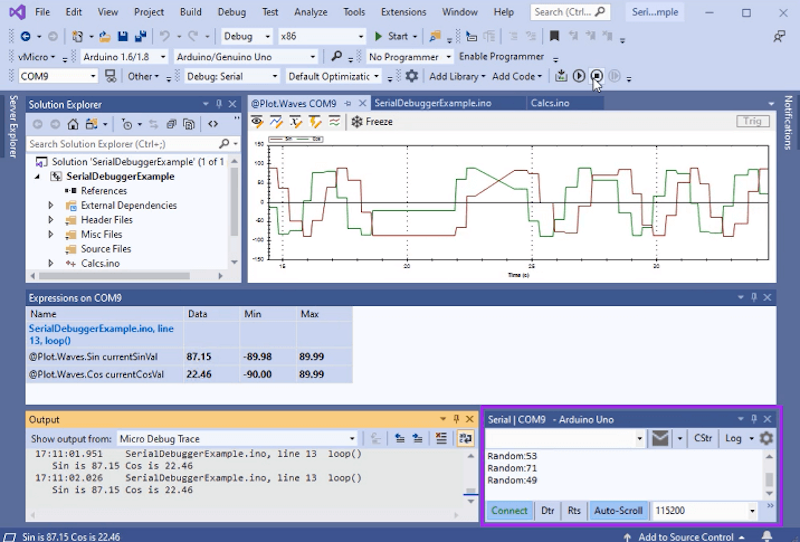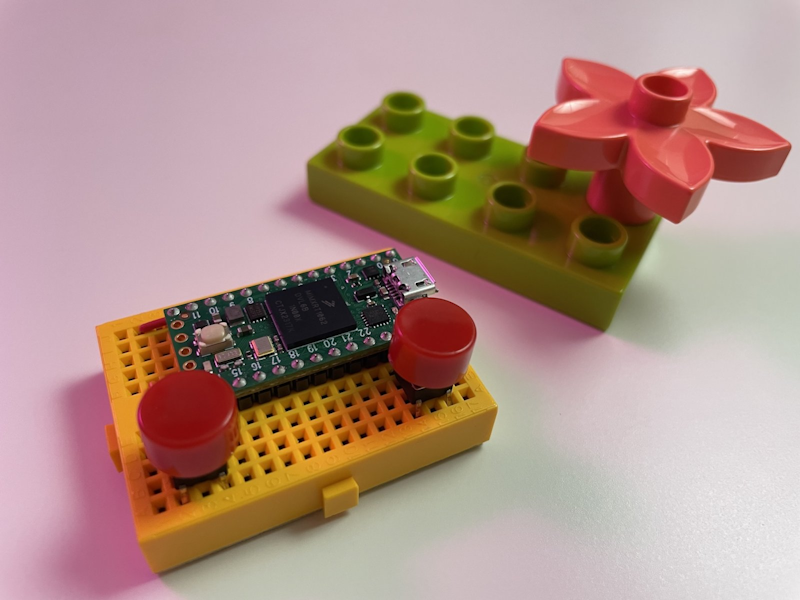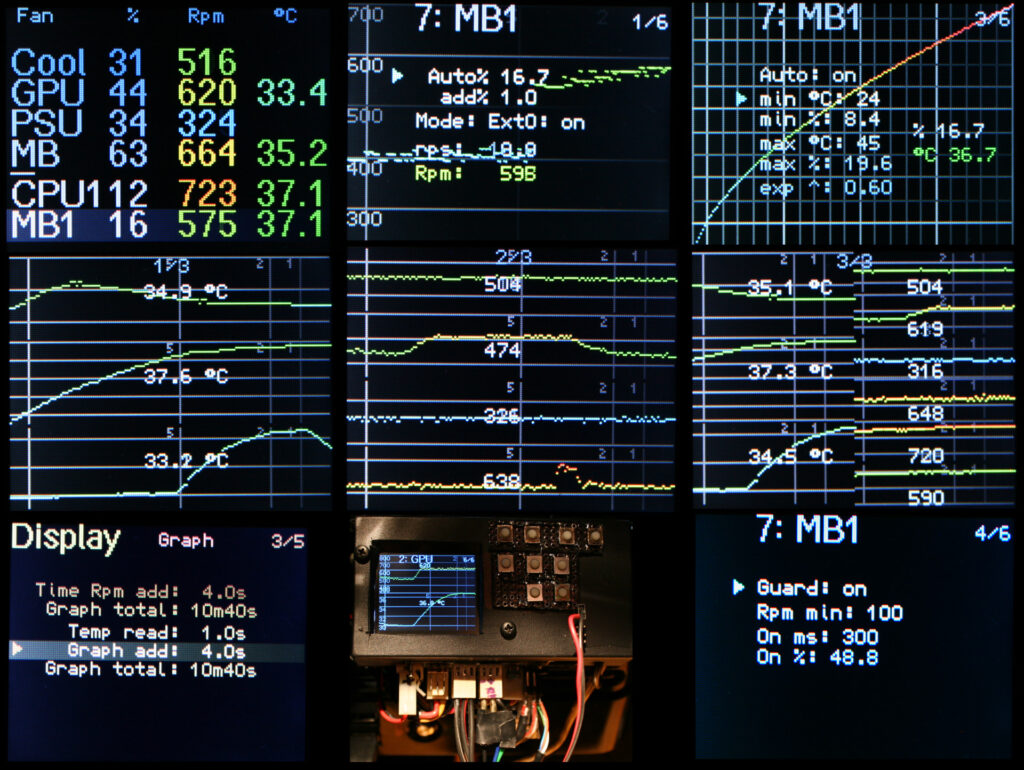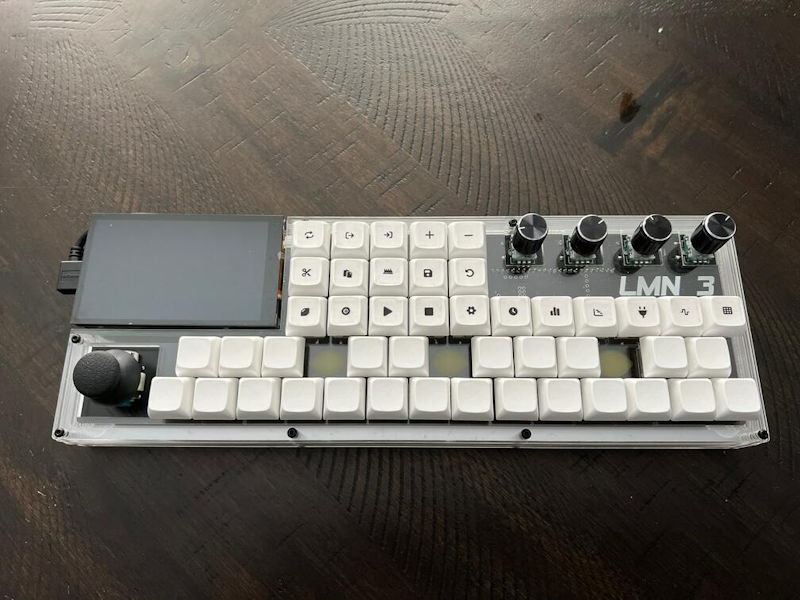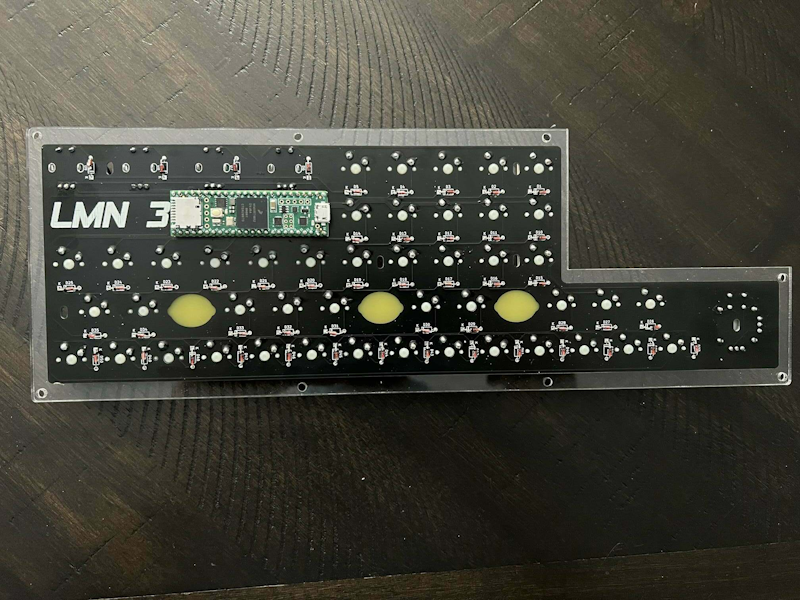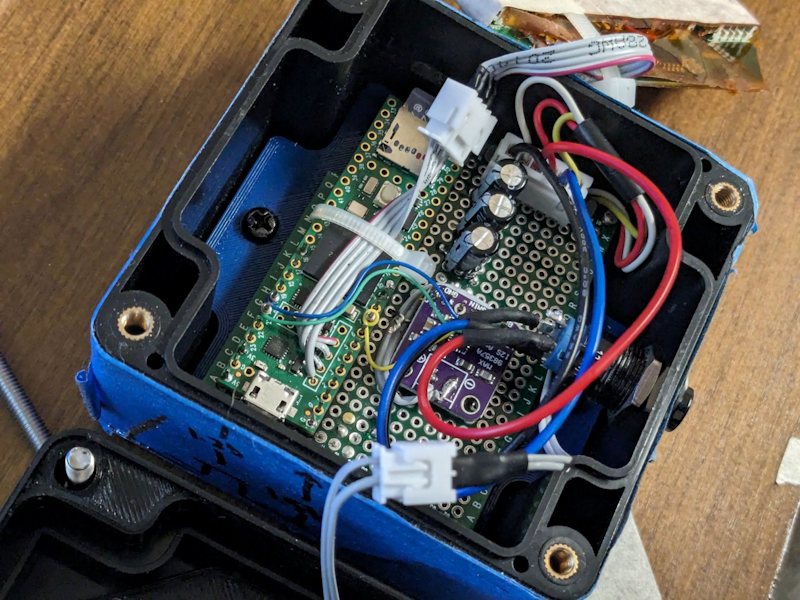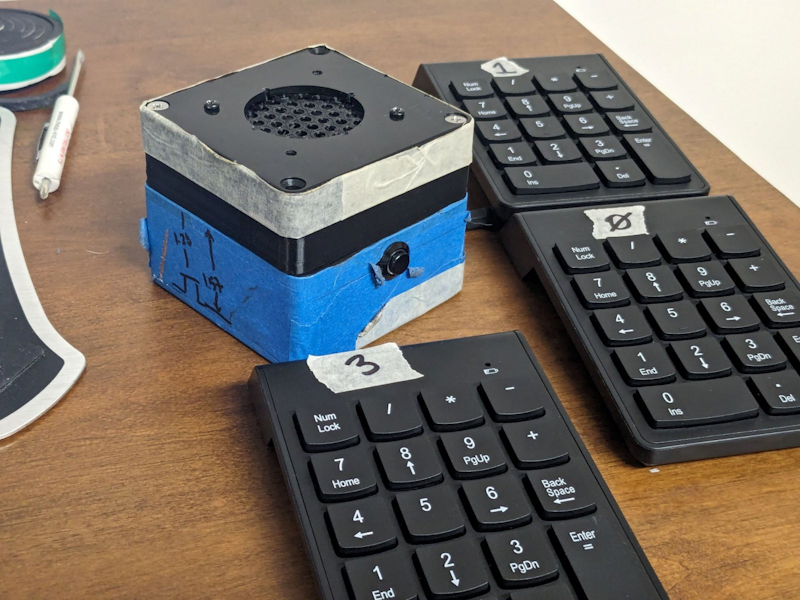Sometimes the simplest solutions are the best. KD5RXT (Mark)’s “fairly simple” Teensy RV Leveling Helper (TRLH) may not be uncomplicated as a spirit level, it’s a clever solution to a common problem for RV owners.
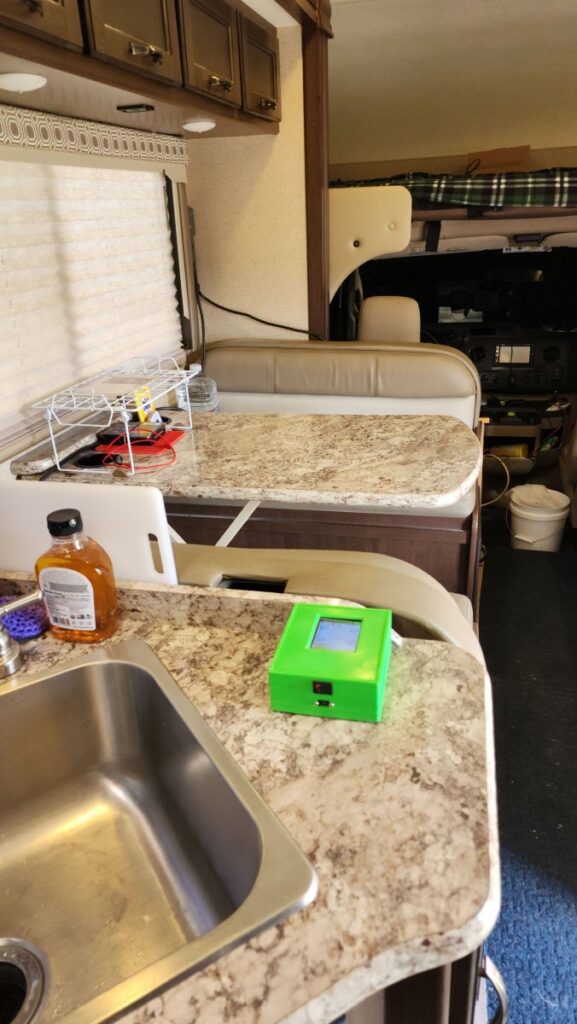
The helper is placed on RV’s counter to measure whether the surface is level enough. Adjustment info is sent wirelessly to another unit outside, used to adjust the leveling ramps.
Based around a Bosch BMA400 accelerometer, ILI9341 touchscreen display, and a Teensy 4.0, this simple system takes the guesswork out of leveling your RV.
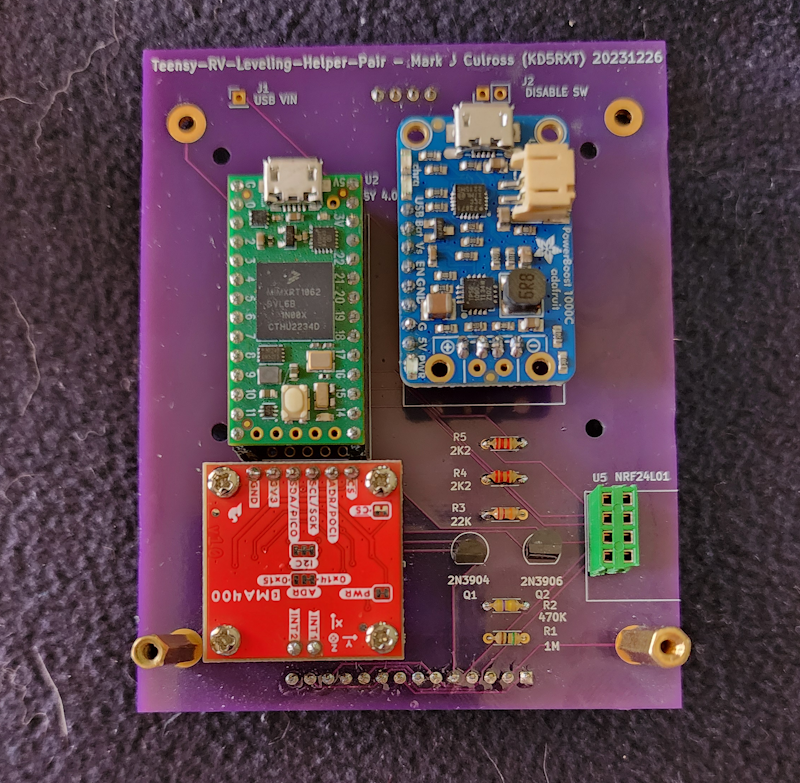
Using vector information from the accelerometer, the pitch and roll angles are then calculated, in turn providing the number of inches that each wheel on the RV (or wheel and hitch on a trailer) needs to be raised or lowered. A built-in LiPo battery with Adafruit PowerBoost 1000 USB charger ensures portability. A new update even allows two units to cooperate inside and outside of the vehicle using nRF24L01 wireless modules. Source, schematics, CAD files and more can be found on the project’s GitHub repo.
